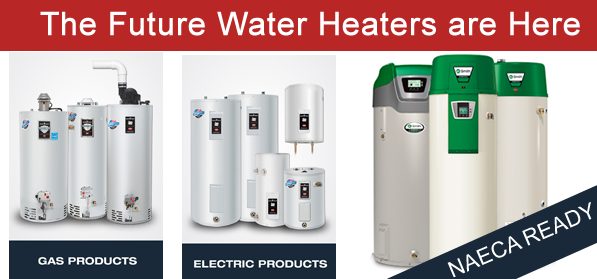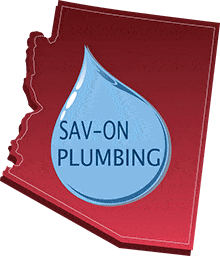What’s the big deal about new water heaters? Well, nothing, until you need a new one, and then they might be a problem. Starting April 2015, a new energy factor takes effect that will change the manufacturing guidelines of water heaters. To meet new government energy efficiency standards, new water heaters will be taller, wider and heavier. This presents several immediate challenges.

Installation – Will your new water heater fit into the existing opening of your existing water heater? Many existing water heaters are inside the home or in an alcove in the garage where the fit is tight.
Cost – New water heaters are going to be more expensive. In addition, installation costs for a heavier heater may increase due to the fact that many installs are now going to become a two-person job.
The problem
Your water heater is leaking so you call your Phoenix plumber, who arrives with a new unit. The new unit is two inches wider than the old one, and with the required one inch minimum clearance on each side, the new unit won’t fit. Or, the new unit is too tall to fit in the current closet where your existing unit sits.
The solution
You have basically three options:
- Install a smaller unit, a 30 gallon instead of a 40 gallon unit, for example.
- Move the unit to a different location inside or outside the home.
- Install a tankless unit.
These solutions all present their own issues. Installing a smaller unit is fine if your family is downsizing, but going from a 40-gallon tank to a 30-gallon tank will greatly reduce the amount of hot water available.
Moving the unit to a new location is going to be expensive. You must move water piping and possibly a gas line or electric service. This is not cheap.
Installing a tankless unit is a costly fix and while tankless technology has improved in the last few years, there are still many drawbacks to going this route. Many of our customers in the Phoenix area have installed tankless systems, and then called us out a few years later to return to a standard system.
Recommendations
First, maintain your current unit. Replace the anode rod in your existing unit, and any subsequent one you buy, every four years whether it needs it or not. The anode rod is your protection against the corrosive effects of our water attacking the inside tank liner. Yet this warranty procedure is the most commonly neglected requirement on today’s heaters. Manufacturers’ warranties recommend this replacement interval.
Next, check the location of your existing water heater to determine if a new unit of the same gallon capacity which is three inches taller and two inches wider will fit into this space. If it will, you can breathe a sigh of relief.
Finally, consider buying a new water heater now before the new standards take effect. There are still units manufactured under the old standard in supply houses, but they won’t last long. If you need a water heater in the Glendale or Phoenix area, you should act now, especially if you have space constraints in your current location.
For more information visit the: US. Dept of Energy’s Appliance & Equipment Standards.
